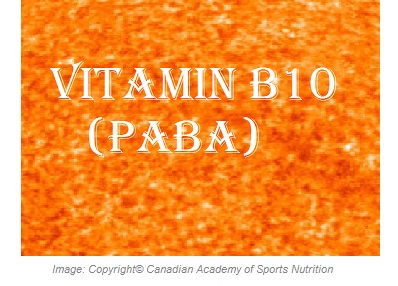 It is famous as the “sunscreen vitamin” for its protective effect against ultraviolet light. This vitamin is important for skin and hair health. There is a controversy among scientists whether PABA is a vitamin or not.
It is famous as the “sunscreen vitamin” for its protective effect against ultraviolet light. This vitamin is important for skin and hair health. There is a controversy among scientists whether PABA is a vitamin or not.
Functions of PABA:
- It absorbs ultraviolet light from sun, showing sunscreening properties.
- It may enhance the effects of cortisone.
- It is vital for the health of skin and hairs.
- It may prevent or reverse the accumulation of fibrotic tissues.
- It assists the metabolism of amino acids.
Food Sources and Absorption:
Foods high in PABA are brewer’s yeast, liver, whole grains, eggs, and wheat germs. It is also made in the intestine by bacteria. PABA is absorbed from the upper part of the small intestine and is stored in the body in small amounts.
Benefits of PABA:
The following conditions may benefit from PABA:
- As a sunscreen (applied topically).
- Scleroderma.
- Peyronie`s disease.
- Dermatitis herpetiformis.
- Pemphigus.
- Vitiligo.
- Female infertility.
- Hair loss (especially when combined with vitamins B5, B7, and B9).
- Premature graying of hairs (especially when combined with vitamins B5, B7, and B9).
- Irritable bowel syndrome (IBS).
- Eczema.
Dosage and Side Effects:
No RDA has been established for PABA. It is not usually added to multivitamin products, but it is available as 100 mg, 500 mg, and 1000 mg. The recommended usual dose is 100 – 1000 mg per daily. As a sunscreen, it is available in the concentrations of 1% – 15%.
Higher doses of PABA could cause stomach upset, nausea, vomiting, anorexia, fever, and skin rash. Doses more than 8 – 10 grams per day might lower blood sugar levels and cause damages to the liver and kidneys.
Interactions:
- Sulfonamide antibiotics (such as sulfamethoxazole, sulfasalazine, sulfisoxazole and trimethoprim – sulfamethoxazole): PABA decreases the effectiveness of these antibiotics.
- Dapsone: PABA may decrease the effectiveness of this medication.
- Corticosteroids: PABA may increase the effectiveness of these medications.

